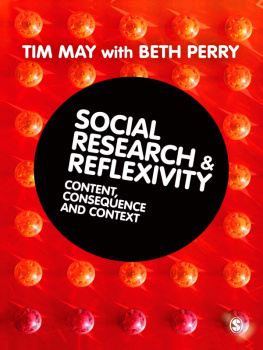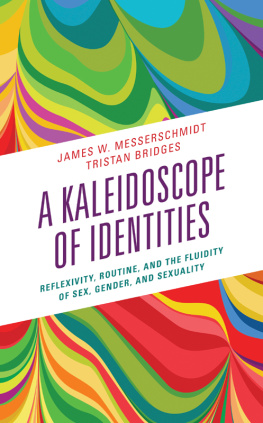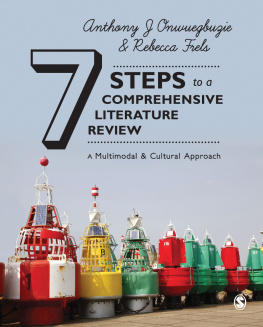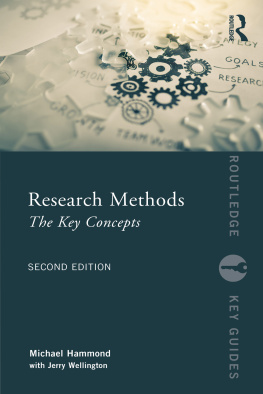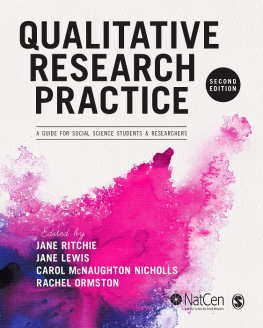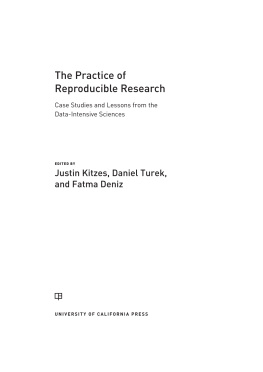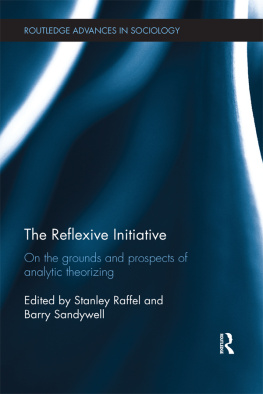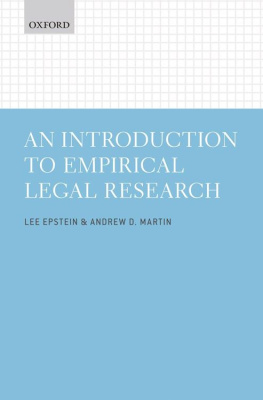DOING REFLEXIVITY
An introduction
Jon Dean
First published in Great Britain in 2017 by
Policy Press University of Bristol 1-9 Old Park Hill Bristol BS2 8BB UK Tel +44 (0)117 954 5940 e-mail
North American office: Policy Press c/o The University of Chicago Press 1427 East 60th Street Chicago, IL 60637, USA t: +1 773 702 7700 f: +1 773-702-9756 e:
Policy Press 2017
British Library Cataloguing in Publication Data
A catalogue record for this book is available from the British Library
Library of Congress Cataloging-in-Publication Data
A catalog record for this book has been requested
ISBN 978-1-4473-3085-1 paperback
ISBN 978-1-4473-3084-4 hardcover
ISBN 978-1-4473-3086-8 ePub
ISBN 978-1-4473-3087-5 Mobi
ISBN 978-1-4473-3088-2 ePdf
The right of Jon Dean to be identified as author of this work has been asserted by him in accordance with the Copyright, Designs and Patents Act 1988.
All rights reserved: no part of this publication may be reproduced, stored in a retrieval system, or transmitted in any form or by any means, electronic, mechanical, photocopying, recording, or otherwise without the prior permission of Policy Press.
The statements and opinions contained within this publication are solely those of the author and not of the University of Bristol or Policy Press. The University of Bristol and Policy Press disclaim responsibility for any injury to persons or property resulting from any material published in this publication.
Policy Press works to counter discrimination on grounds of gender, race, disability, age and sexuality.
Cover design by Andrew Corbett
Front cover image: Arthimedes/Shutterstock
Readers Guide
This book has been optimised for PDA.
Tables may have been presented to accommodate this devices limitations.
Image presentation is limited by this devices limitations.
For Jenny
List of tables
About the author
Jon Dean lectures in politics and sociology at Sheffield Hallam University. His research focuses on youth volunteering, inequalities within the charity sector, and how public participation is affected by social class. He has also written and published work on research methodology, using innovative tools such as drawing and soundscapes to investigate discrete aspects of society, and on the political culture of the USA in the 1960s. This is his first book.
Acknowledgements
In Tintern Abbey, Wordsworth writes of little, nameless, unremembered, acts of kindness and of love. Research projects are the result of such acts: a myriad combination of personal support and collegial advice, mixed with fleeting moments of inspiration and reassurance. I have probably bored most of my colleagues at Sheffield Hallam to despair during the writing of this manuscript, so I thank them first for their good humour. The book was supported both by a sabbatical, and by the generosity of colleagues in giving their time to review chapters, and to go with my whims on the Desert Island research project discussed within. Special thanks go to Andy Price, Peter Thomas, Julia Hirst, Ian Woolsey, Bob Jeffery, Arash Heydarian Pashakhanlou, Diarmuid Verrier, Cinnamon Bennett, Penny Furness, Henry Lennon, Stephen Spencer, and Carissa Honeywell, Knut Roder, and Anjana Raghavan. I also thank our community of undergraduate and postgraduate students, for asking the awkward questions and for accepting the challenges.
Further back, the postgraduate community at the University of Kent was a constant source of support and ideas, as we made the often lonely academic journey together. I would like to extend my thanks to all my fellow postgraduate students but especially Dara Blumenthal, Jon Ward, Eugene Nulman, Jonah Rees, and Vicky Tedder. But especially, I want to thank my doctoral supervisors Iain Wilkinson and Tim Strangleman, and Beth Breeze at the Centre for Philanthropy, who all took a chance on someone with no knowledge of sociology and no experience of research. I didnt always know what you were talking about but I hope that the important bits went in.
The team at Policy Press has been fantastic: enthusiastic about the project, rigorous in their feedback on the text, and prompt at replying to my incessant queries. To my editor Victoria Pittman in particular, thank you for the opportunity and for providing a shoulder to whinge on.
My mum and dad, Helen and Alan, and my brother Andy, have, while not seeing much of me, managed to keep me going throughout. Whether it was cutting out bits of the newspaper, forwarding relevant emails, and just chatting on the phone, knowing that they are always there takes the pressure off. And to Vera Dean thank you for your continued inspiration. I love you all.
And finally, when I started writing this book Jenny Carr was Jenny Carr. She is now Jenny Dean. And being able to write that is the most satisfying bit of doing the book.
Prelude
Do not copy nature too much. Art is an abstraction. (Paul Gauguin)
A research project can come to envelop everything. Glance at a newspaper and the idea at the core of your project will be the only word in focus. Turn on the radio and the story youre hearing will be tangentially related to exactly the point youre trying to make in that chapter youre currently on. You dive for a pen, or rip that page out of the paper, or, increasingly in my case, take a photo of the page in question, saved for later. The roll of photos on my phone is an odd mix of selfies, landscapes, pages from social theory texts grabbed from the shelves of well-stocked book shops, and potentially relevant cartoons from satirical magazines.
It also happens in art galleries. In the spring of 2013 I took my dad to see an exhibition called Force of Nature: Picturing Ruskins Landscapes at the Millennium Gallery in Sheffield (Museums Sheffield, 2012). A small but perfectly formed exhibition, it sought to frame new and old depictions of landscape through the thought of John Ruskin, the Victorian art critic and philanthropist, who, alongside William Morris and Matthew Arnold, was one of the most radical and dominant figures in nineteenth-century British culture. Ruskin was obsessed with landscape, believing that the close observation and honest depiction of nature would in turn lead to imaginative engagement, moral rightness and even God (Yallop, 2012: 2).
Among the blend of cutting-edge photography and historic watercolour and oil paintings, my researcher spidey-sense was tingling as I looked at a painting from 1890 called The moon is up, and yet it is not night by the pre-Raphaelite painter John Everett Millais. A rather intriguing oil landscape, the painting offers the viewer a Perthshire estate at dusk, with a stag and a hind just visible in the descending gloom. Painted in a very limited palate of oranges, browns, and dirty yellows, the title and the painting endow the remote Highland setting with the atmosphere of an exotic and romantic locale (Virag, 2001). As the exhibitions curator wrote of it: It is a mist filled scene, full of shadows and flickering light, and it perfectly captures the current feel of late autumn with the chill of winter now pressing in (Pullen, 2012). Liking it, but recognising its relative blandness, I usually would have just shrugged and moved on, but decided to read the small information panel next to the painting, more out of museum visitor diligence than any particular enthusiasm for finding out more about the composition.
Millais most famous artistic endeavours were his fantastical depictions of biblical or romantic scenes from literature: his


